1. WBFM transceiver and Manchester modem
The AX.25 protocol was defined around 1980, shortly after the successful Vancouver experiments. From the protocol point-of-view, AX.25 used amateur-radio callsigns as addresses in an otherwise very similar protocol to other professional protocols.
From the amateur-radio point of view, AX.25 was the first widespread protocol to allow automatic networking in place of simple point-to-point contacts. The AX.25 built-in but inefficient "digipeater" was soon replaced by many different AX.25 network nodes developed all around the world.
AX.25 arrived in Slovenia around 1985. Initially all contacts were made on a single frequency 144.675MHz using narrow-band, voice-grade NBFM (15kHz) radios with Bell-202 AFSK modems. A single 1200bps channel only allowed hand-typed chatting. Increasing the number of channels and installing 70cm-band interlinks among nodes only brought minor improvements.
The first decision was simple. In 1988 simple WBFM radios operating in the 23cm amateur band were developed, where "wide-band" means 230kHz filters as used in broadcast FM receivers. These radios allowed a 38400bps network backbone with simple Manchester modems.
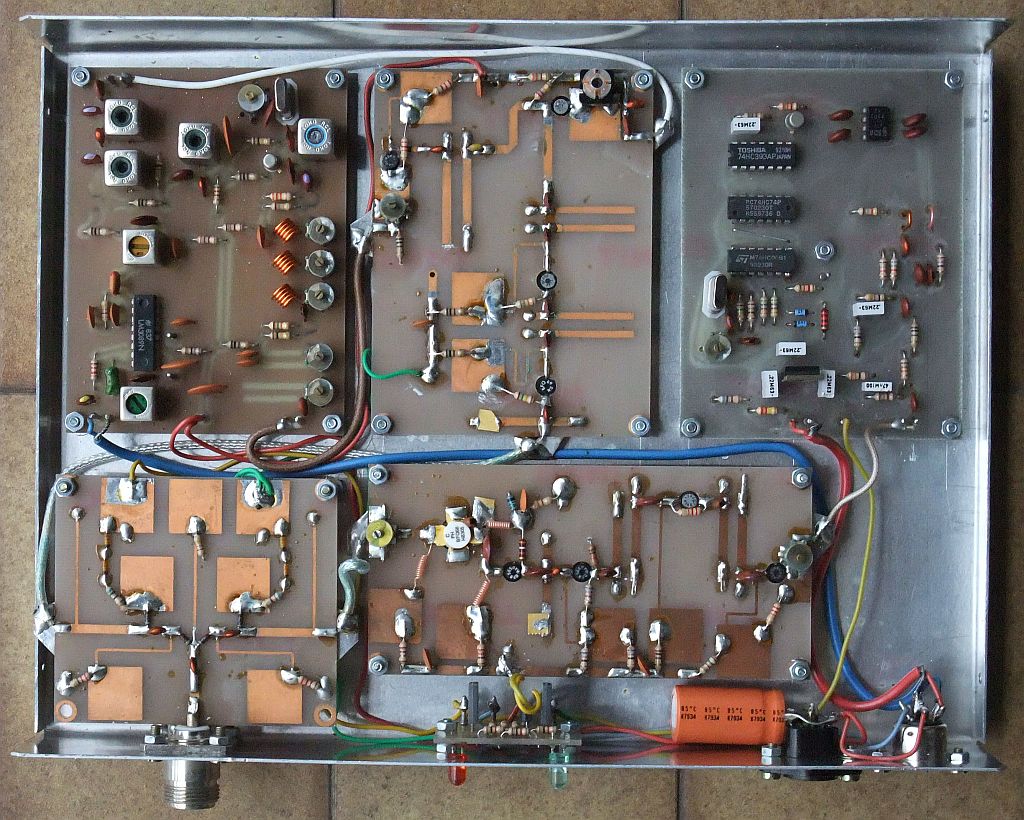
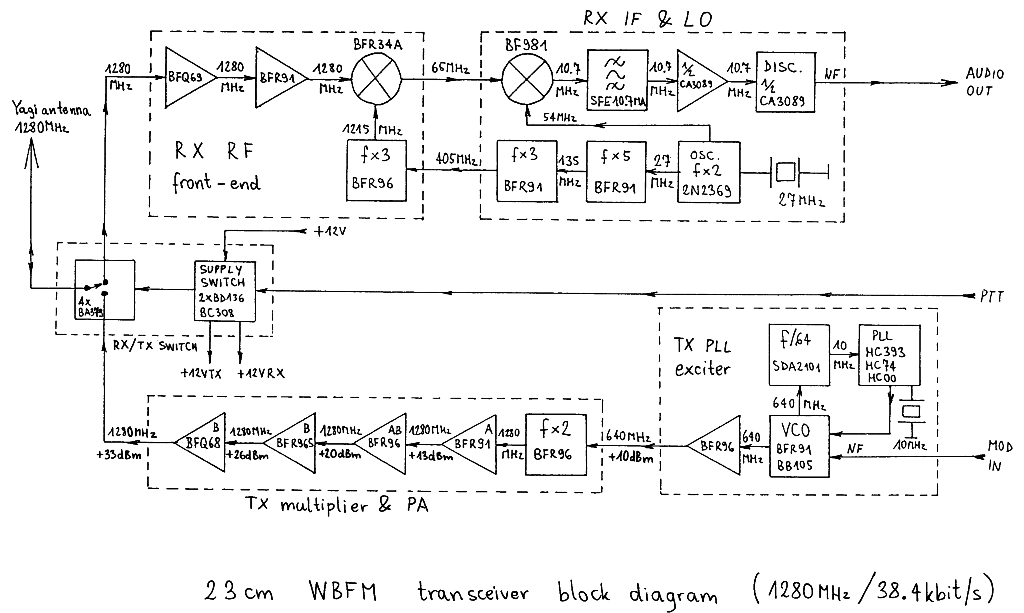
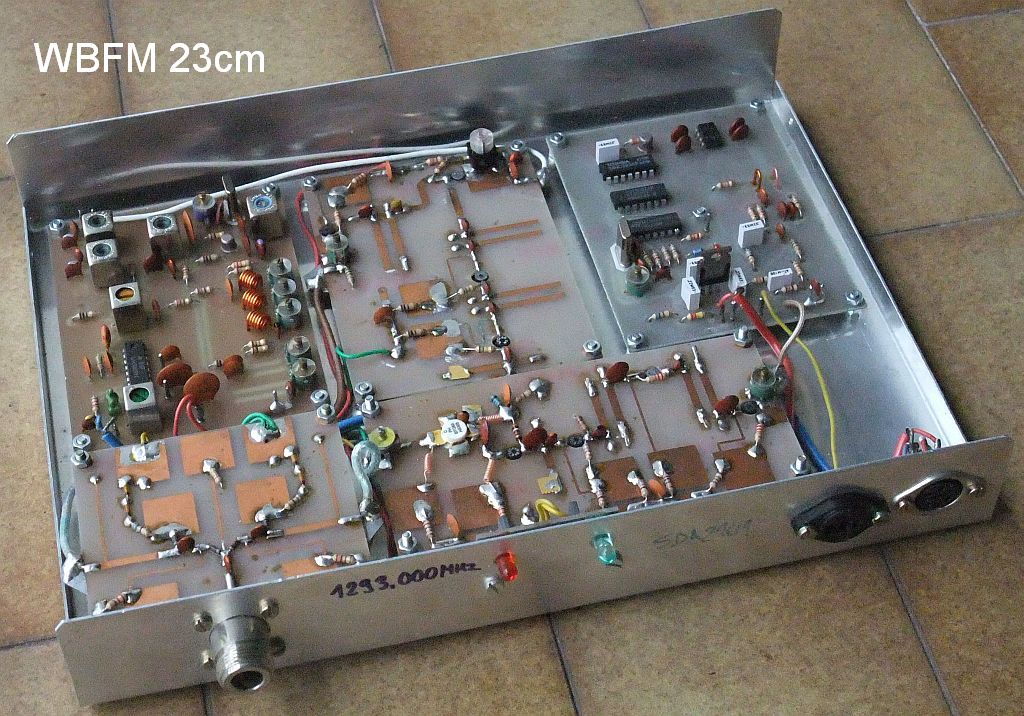
Simple Manchester modems allowed 2400bps through voice-grade NBFM radios for user access and 38400bps through 23cm WBFM radios for the network backbone. Such a network allowed reading as well as uploading text bulletins from/to automated BBS stations.
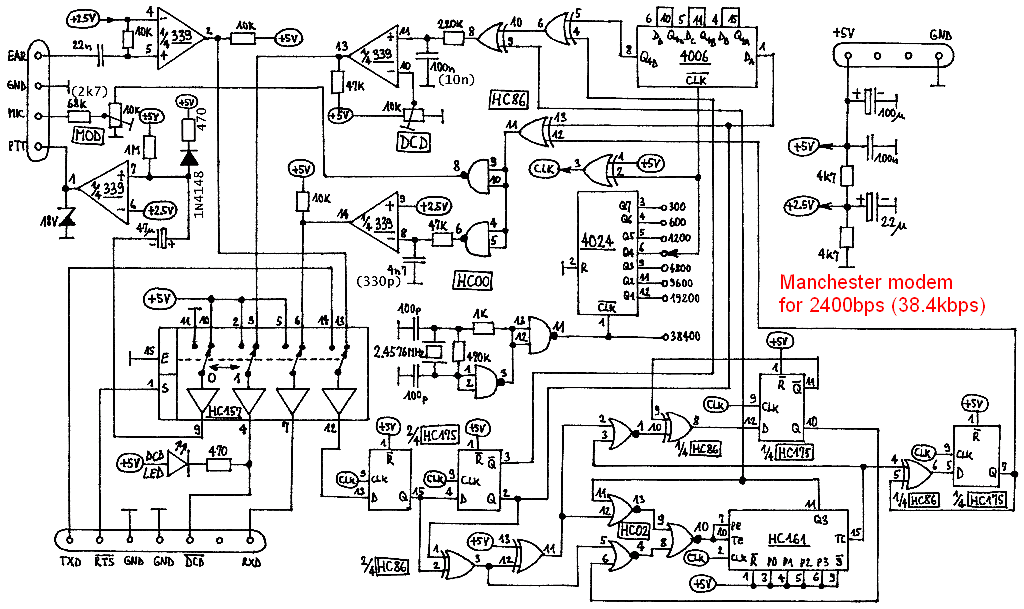

2. SuperVozelj
In 1992 the Slovenian AX.25 network was running NETROM or TheNet software on obsolete TNC2s built in 8-bit microprocessor technology. At 38400bps this software crashed on a daily basis, usually during the evening traffic peak! Although all important network nodes were equipped with a remote-reset telecommand, network reliability and capacity remained both low thanks to TheNet crashware.
The second decision was not so simple, build a new network-node computer based on:
(1) using up-to-date 16-bit microprocessors without performance limitations,
(2) starting from zero to write clean, bug-free code without recycling and
(3) inventing a simple but very reliable network-node protocol.
The project was nicknamed SuperVozelj. The node computer is based on the MC68010 or MC68020 microprocessor. In addition to several AX.25 channels operating at up to 38400bps it allows two DMA-supported AX.25 channels operating at up to 1.2Mbps!
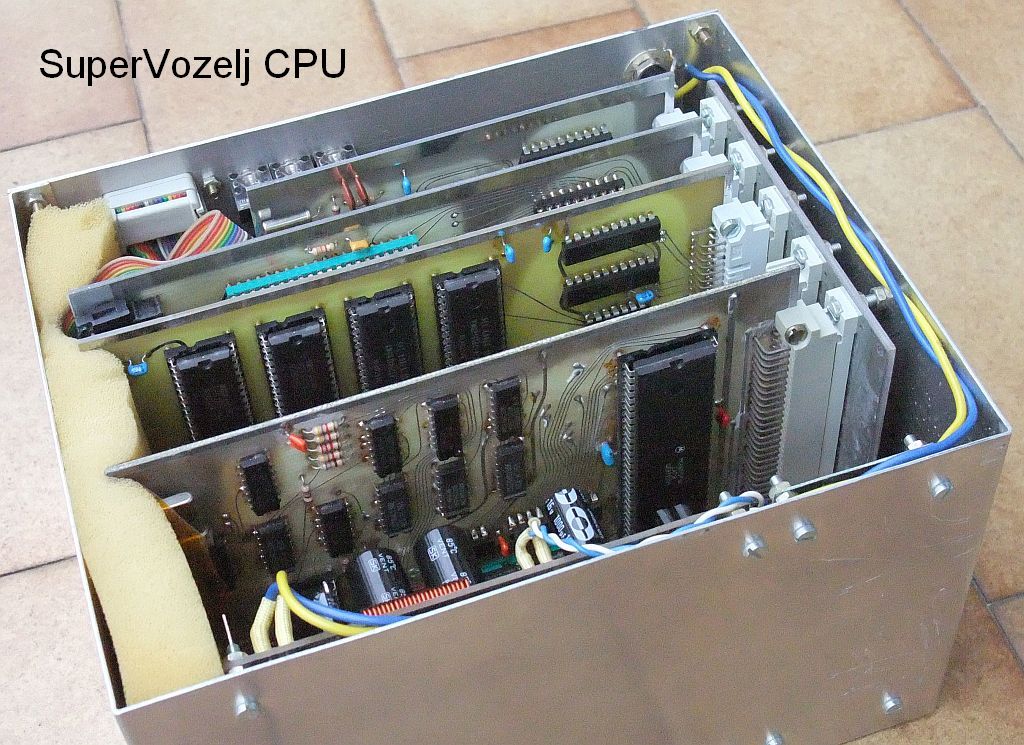
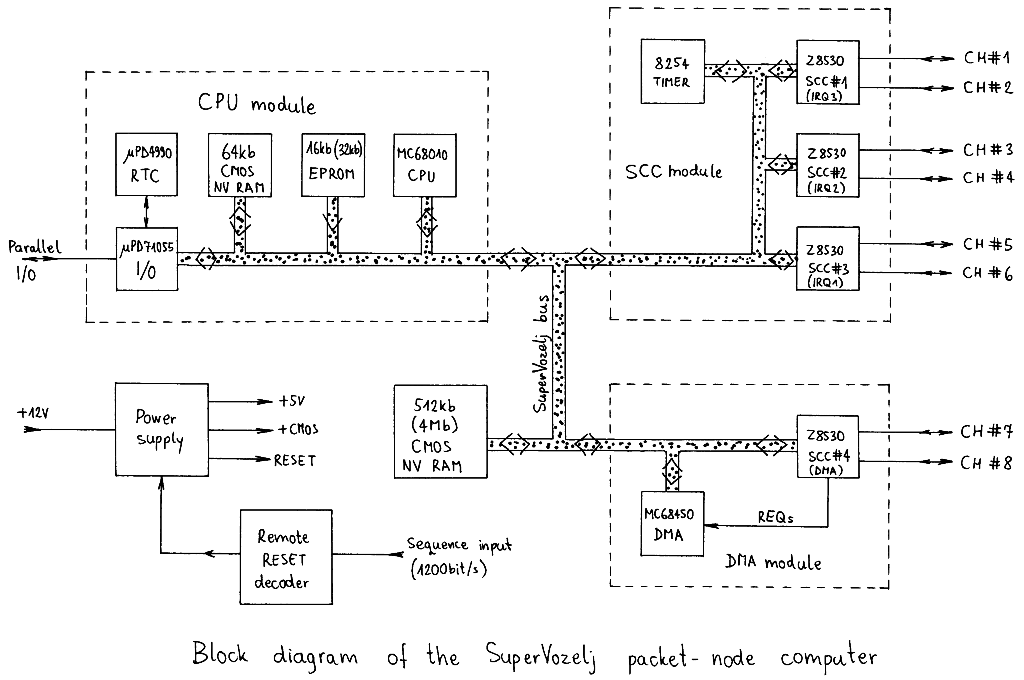
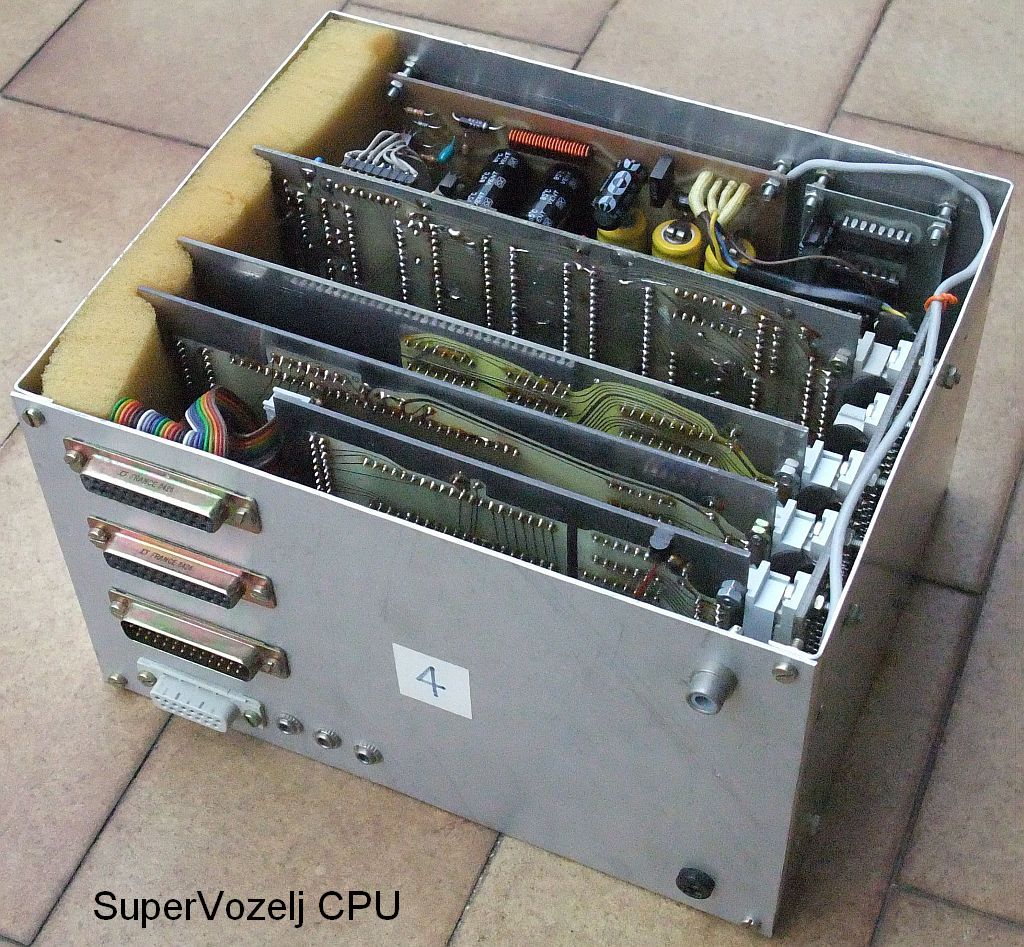
AFSK and Manchester modems up to 38400bps were usually assembled in groups of three in a SuperVozelj node.
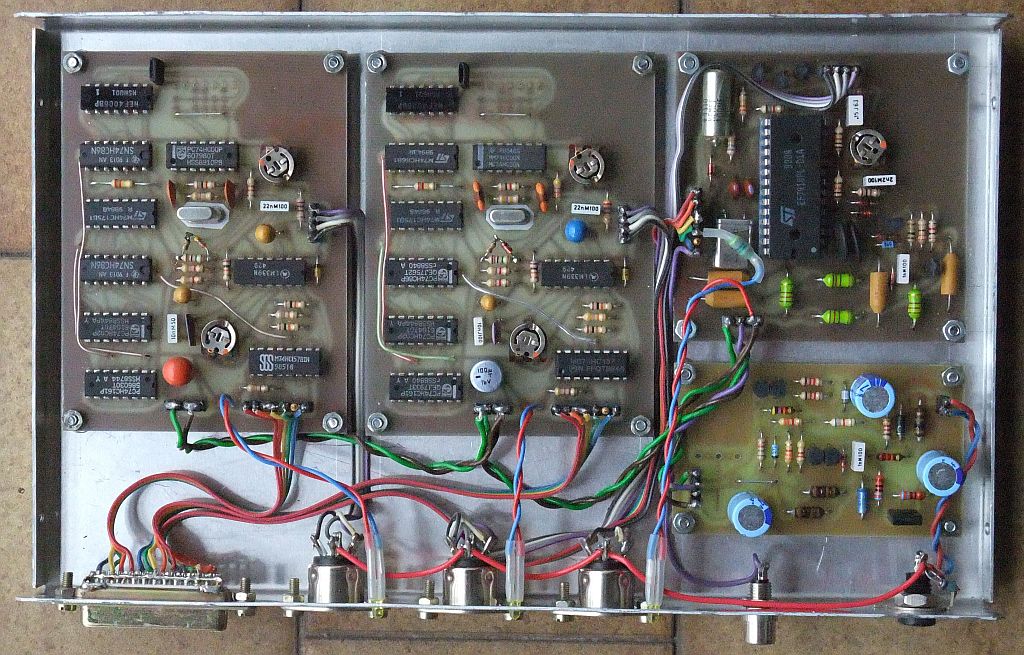
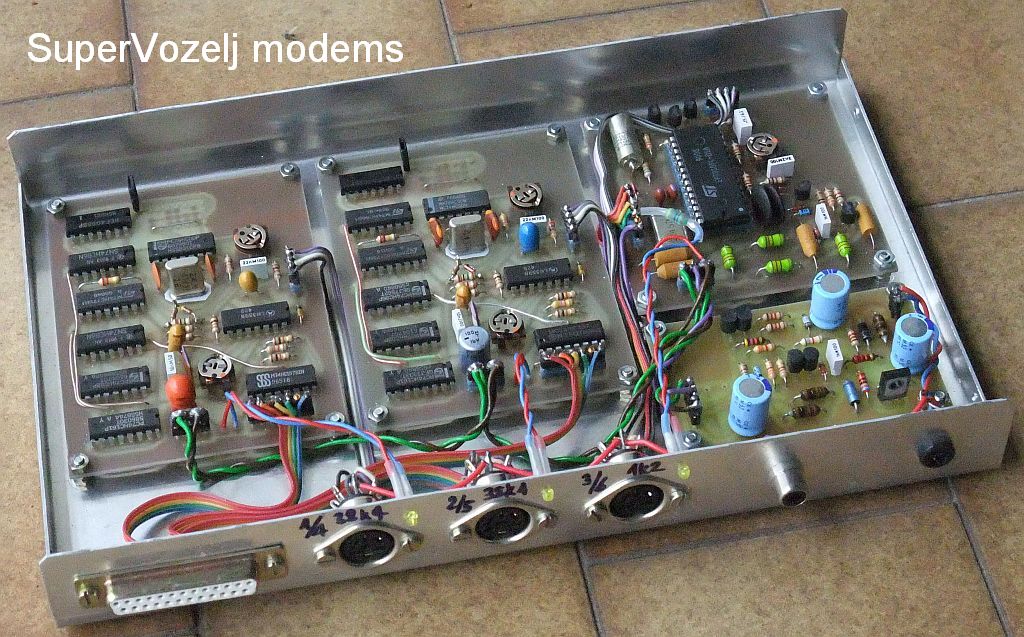
1200bps or 2400bps is rather slow even for user access. Due to unrepeatable results, it was decided NOT to use commercial 9600bps modems requiring complex modifications to even more expensive commercial NBFM (15kHz) radios.
Gigahertz frequencies are rather high for homebuilders. Therefore a simple 70cm WBFM (200kHz) transceiver was developed in 1993 for 38.4kbps user access. This radio was a big success. It was built in hundreds. It never produced any interference to narrowband users of the 70cm band!
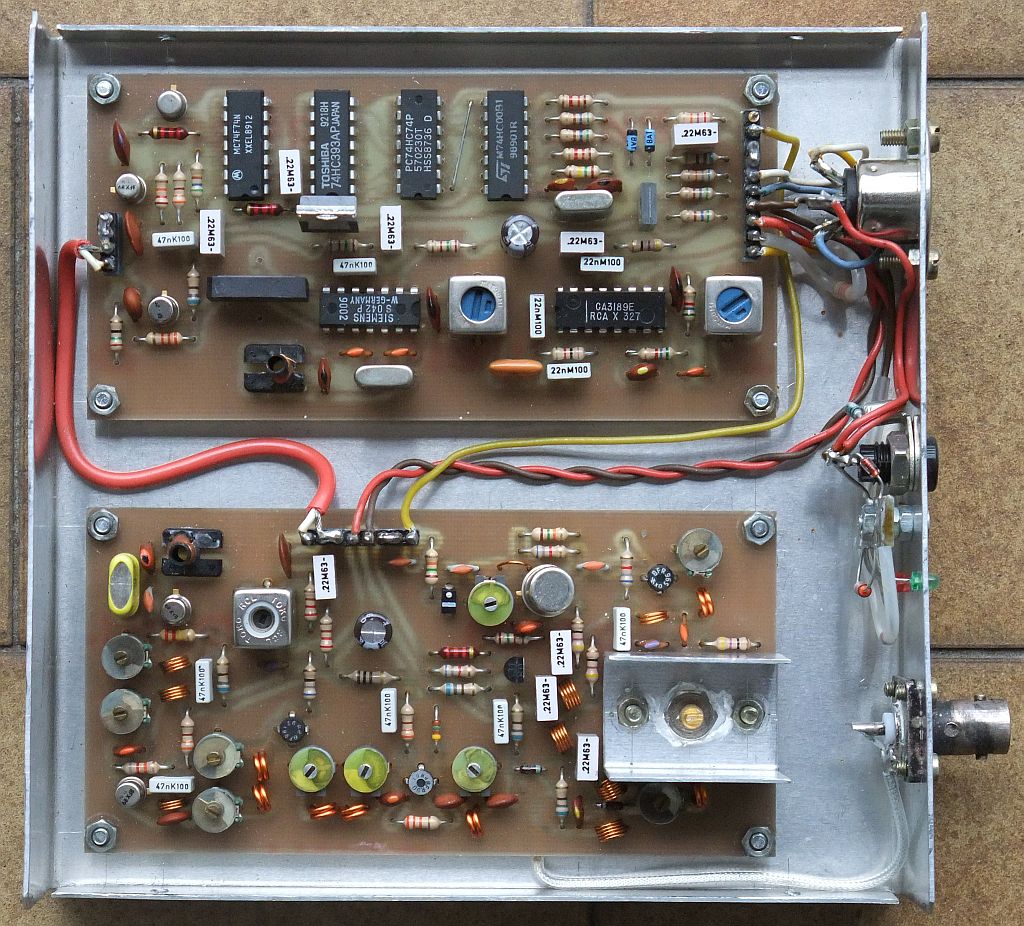
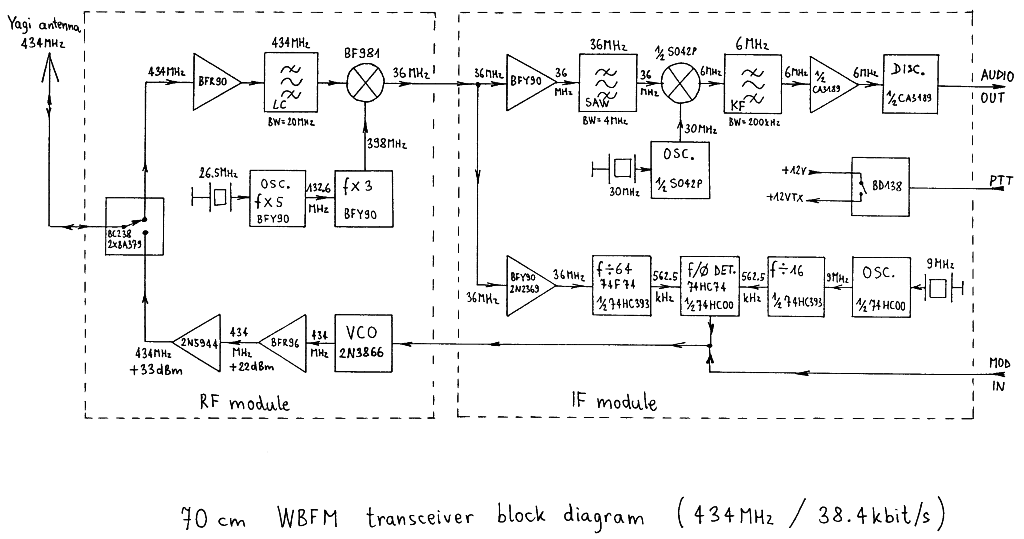
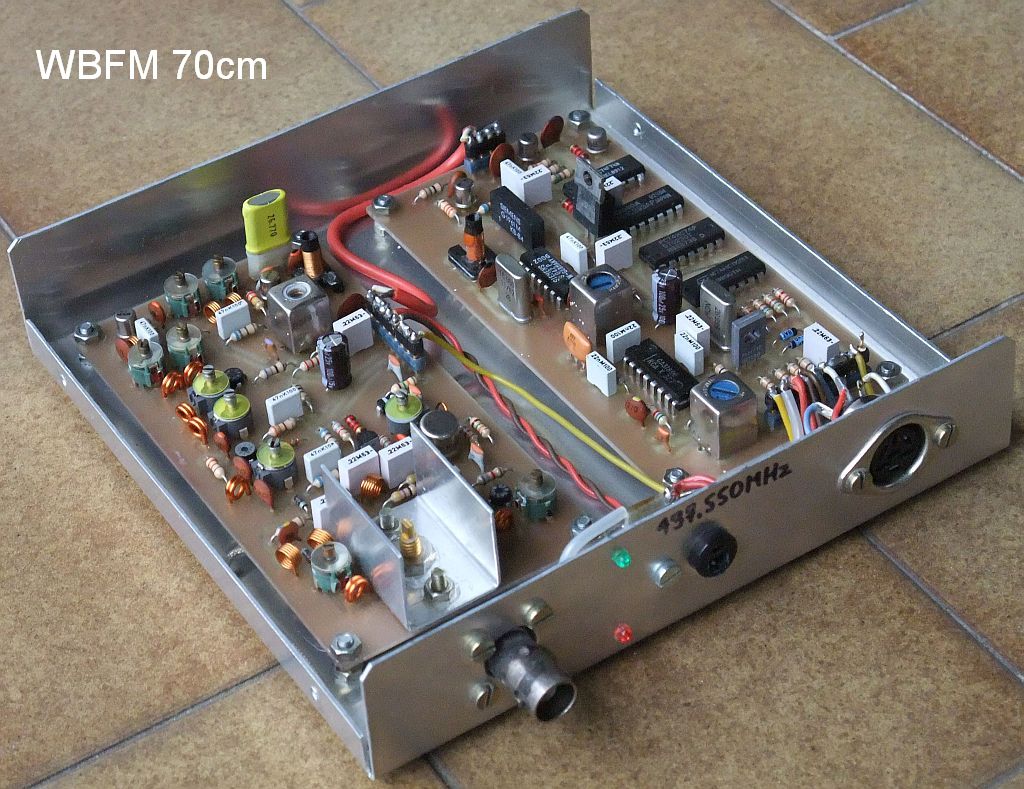
3. Megabit BPSK transceiver
Digital communications in both professional and amateur communities started with modems connected to analog radio transceivers. Such a solution is both power-inefficient and spectrum-inefficient due to the double modulation. Any further network upgrade should therefore use radio transceivers specifically designed for data transmission. The modulation should be selected carefully to efficiently use both the available transmitter power and frequency spectrum.
BPSK modulation with coherent detection is a good choice for amateur-radio networks. Symmetrical BPSK offers the best transmitter-power efficiency, since there are no residual carriers, all of the transmitter power being used for information-carrying sidebands. Although spectrally not as efficient as QPSK, symmetrical BPSK is still spectrally more efficient than any double-modulation (modem + analog RTX) solution. Finally, BPSK transceivers are relatively simple to build, align and troubleshoot.
Our first BPSK transceiver for the 13cm band was developed in 1995. The transmitter uses direct modulation with the 1.2288Mbps data stream. The receiver uses double downconversion respectively to 75MHz and 10MHz. The coherent BPSK demodulator uses a squaring loop for carrier recovery.
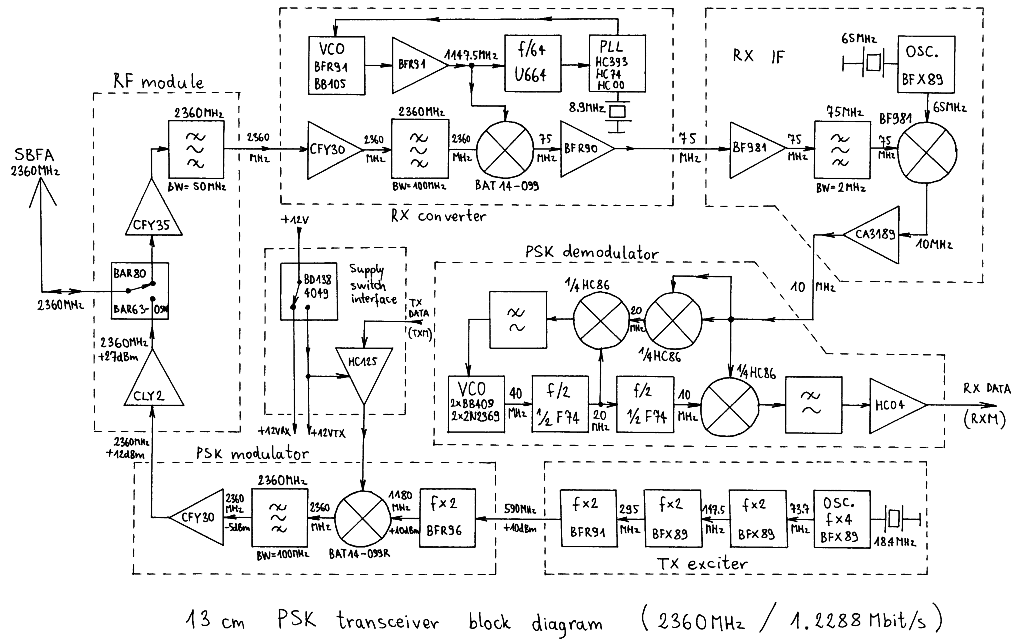
BPSK 13cm RTX description


The Z8530 HDLC controllers inside the SuperVozelj CPU include internal DPLLs for clock recovery up to a few hundred kbps. Since the built-in DPLLs are unable to recover the clock at 1.2288Mbps, external clock recover circuits are required for the two megabit channels of a SuperVozelj node. The external bit synchronizers also include data scramblers/descramblers to randomize the modulation spectrum.
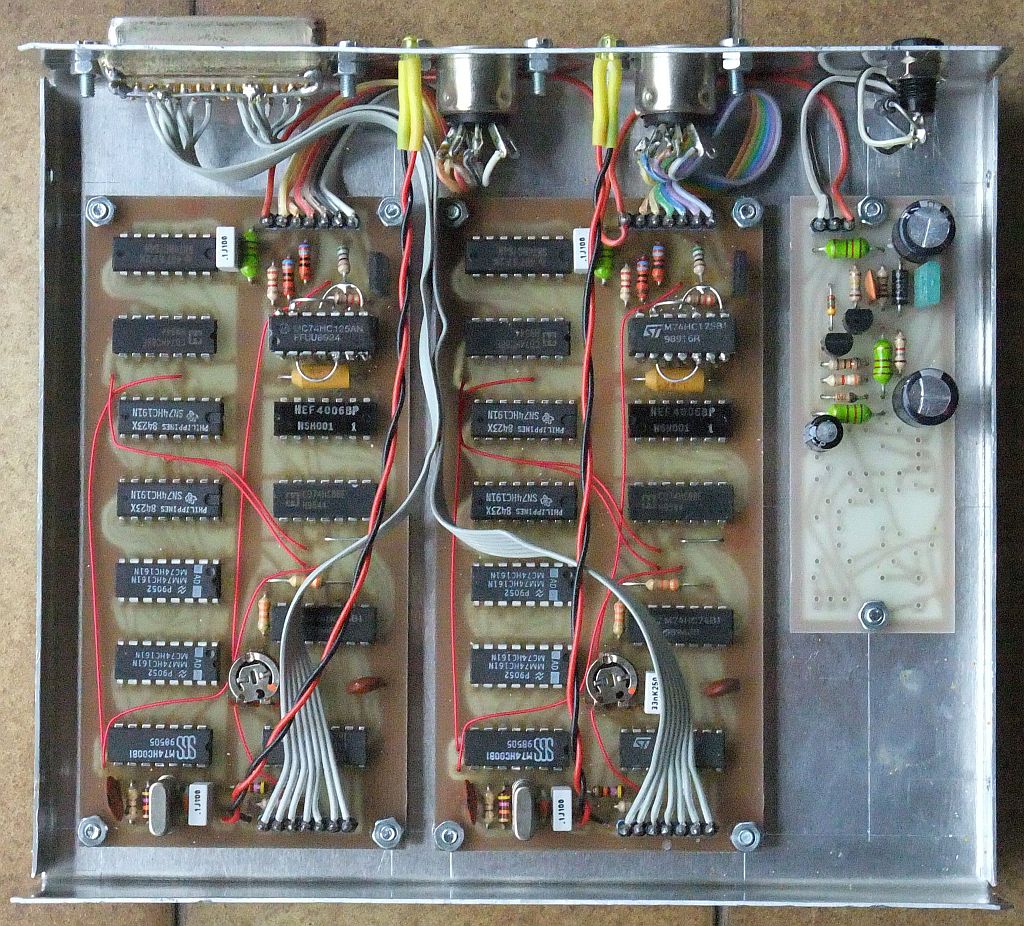
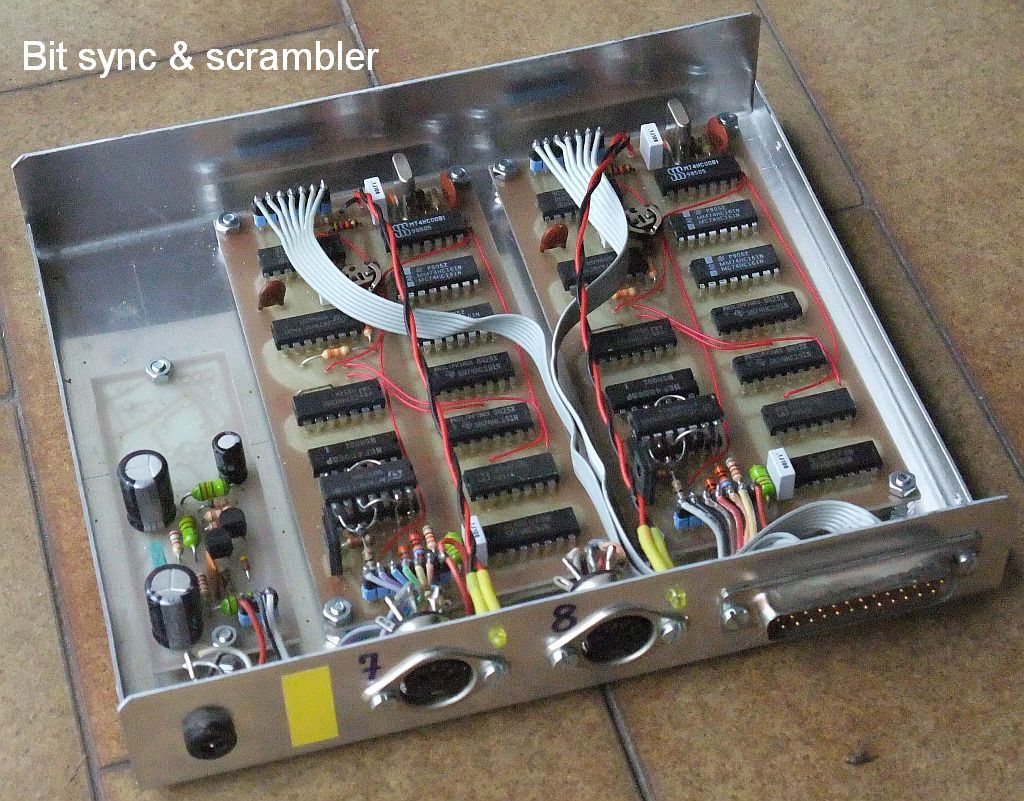
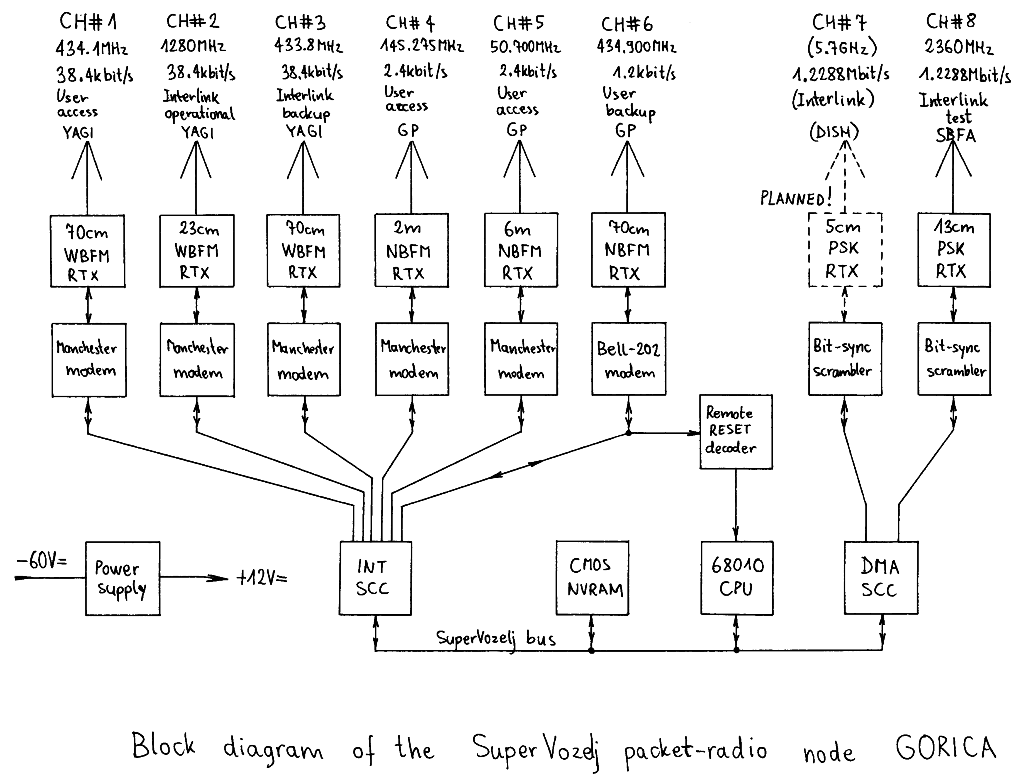
Webcams were not invented yet. Therefore a simple frame grabber was developed in 1996 to interface analog video cameras to SuperVozelj nodes. Many mountain-top SuperVozelj nodes were equipped with cameras to make scenic views available to packet users in all seasons and in any weather.
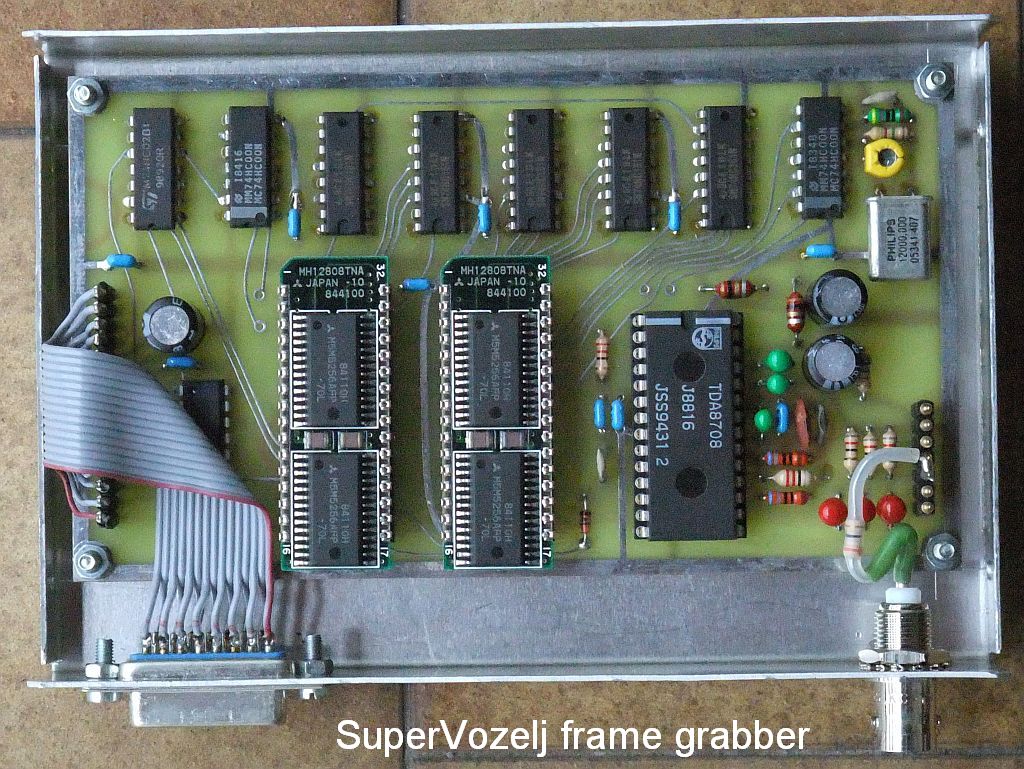
A Zero-IF BPSK data transceiver for the 23cm band was pioneered in our network in 1996. This transceiver was much simpler to build than the double-conversion BPSK transceiver. Only the local-oscillator chain required some tuning, the remaining circuits could be designed NOT to require any tuning at all! The 23cm ZIF-BPSK transceiver quickly became the radio of choice for advanced packet-radio users.
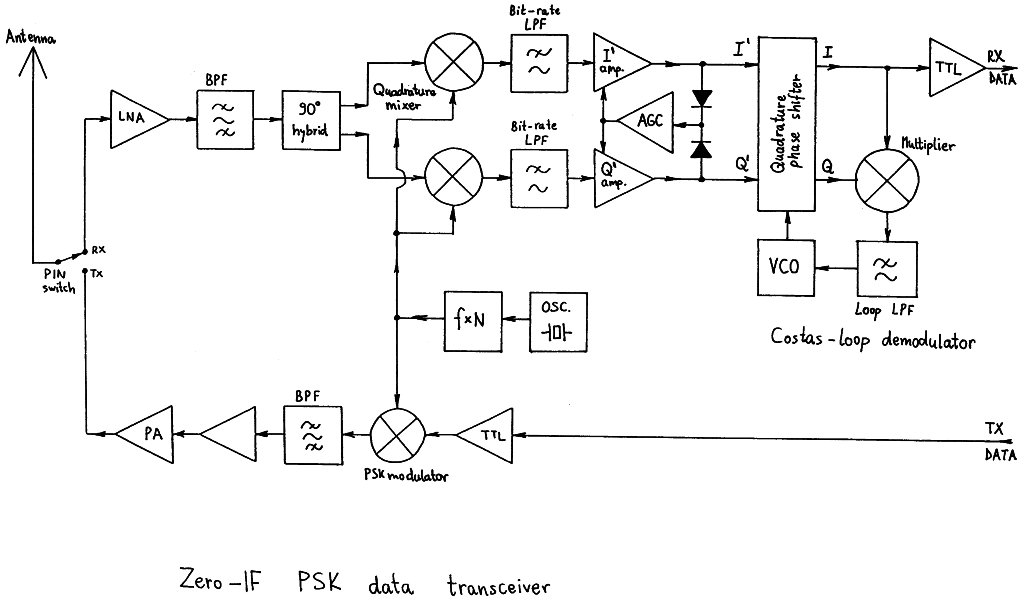
ZIF-BPSK 23cm RTX description

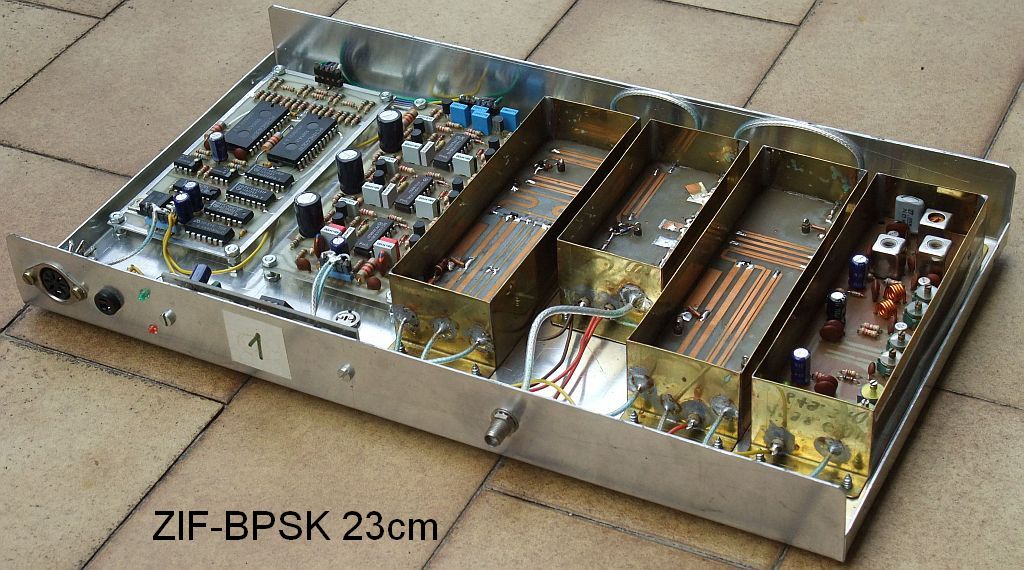
4. Megabit KISS/SLIP TNC
While megabit links became available to the user community, the development of AX.25 hardware and software almost stopped anywhere in the world. Megabit AX.25 access was therefore mainly used for bandwidth-hungry internet access or TCP/IP over AX.25.
Modifying the SuperVozelj firmware for longer TCP/IP frames up to 1500 bytes was relatively easy. Megabit user access was limited to PC ISA cards supported by unreliable software. Worst of all, ISA slots disappeared from personal computers!
A simple KISS-TNC capable of megabit operation had to be developed first:
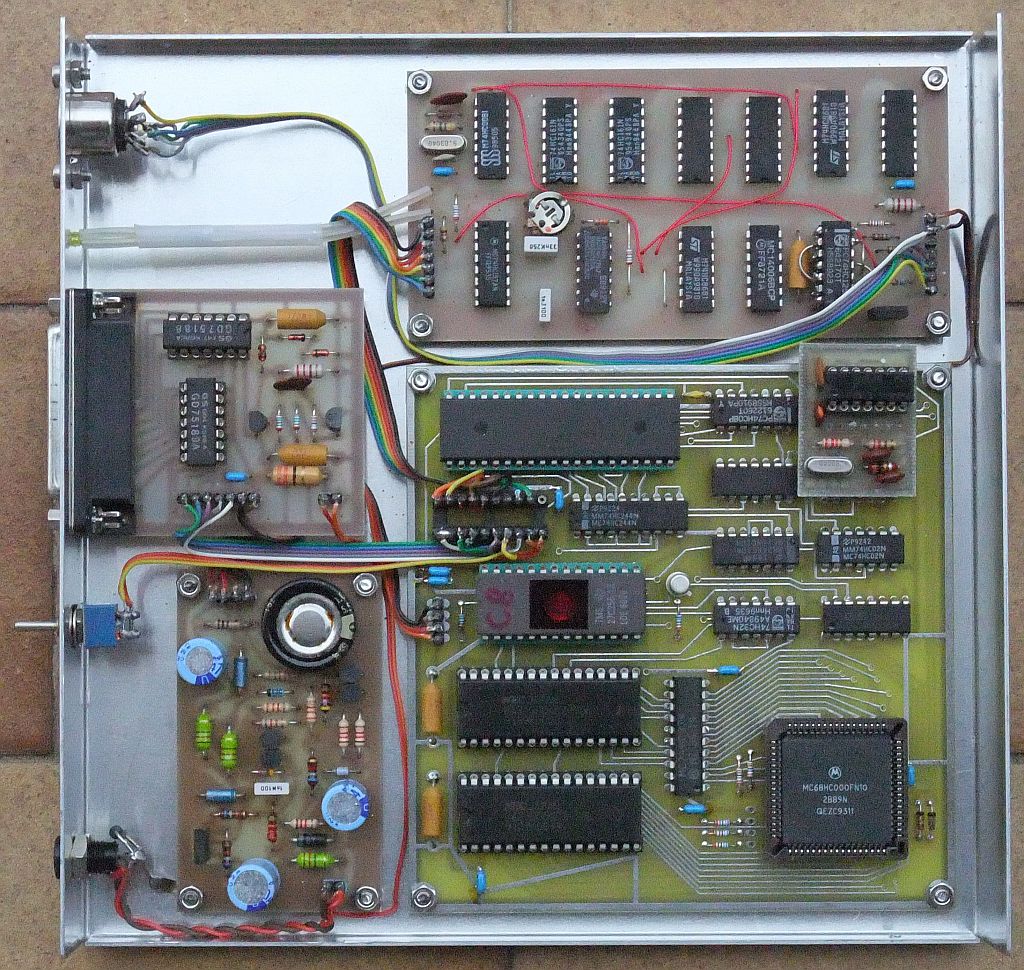
KISS/SLIP TNC description
 KISS/SLIP TNC files
KISS/SLIP TNC files

Since TCP/IP over AX.25 is poorly supported in all known PC software, a different solution had to be invented. AX.25 encapsulation of TCP/IP frames was shifted inside the new TNC. The TNC communicates with the host computer using the SLIP protocol emulating a standard telephone modem. This very efficient solution does not require any additional nor new software inside the PC! Back in 2001 this solution provided a much better internet access than the expensive ISDN public network...
Since KISS and SLIP use the same framing and the two protocols are unambiguously defined by their first data byte, the KISS/SLIP TNC can simply operate with both protocols simultaneously on the same RS-232 port at the same time. Besides AX.25 operation over radio, the KISS protocol is also used to set the TNC parameters with an AX.25 terminal program including the IP/AX.25 routing table:
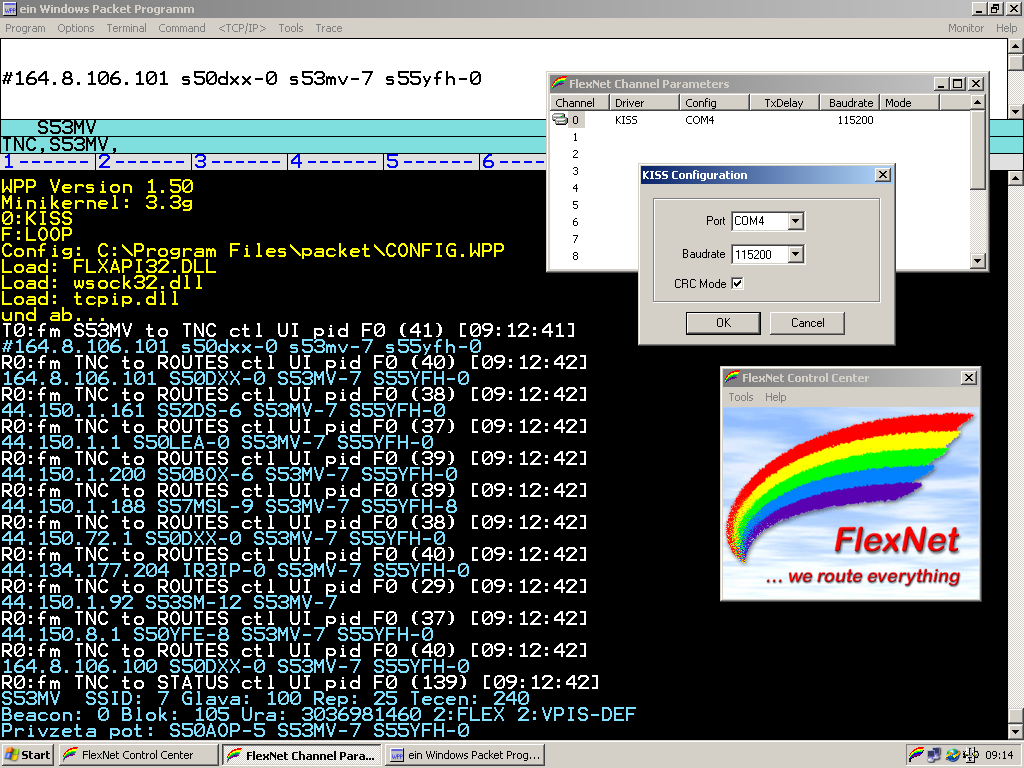
Using the described hardware and software, an extensive AX.25 network capable of efficient TCP/IP operation was built in Slovenia. Most of the hardware used in the Slovenian packet-radio network is described in detail in two books:
Digitalni mostovi (SLO)
 Beacon 99 (SLO)
Beacon 99 (SLO)

5. Improved BPSK transceiver
Development did not stop here. Old double-conversion BPSK radios for 13cm were replaced by new 13cm ZIF-BPSK radios.
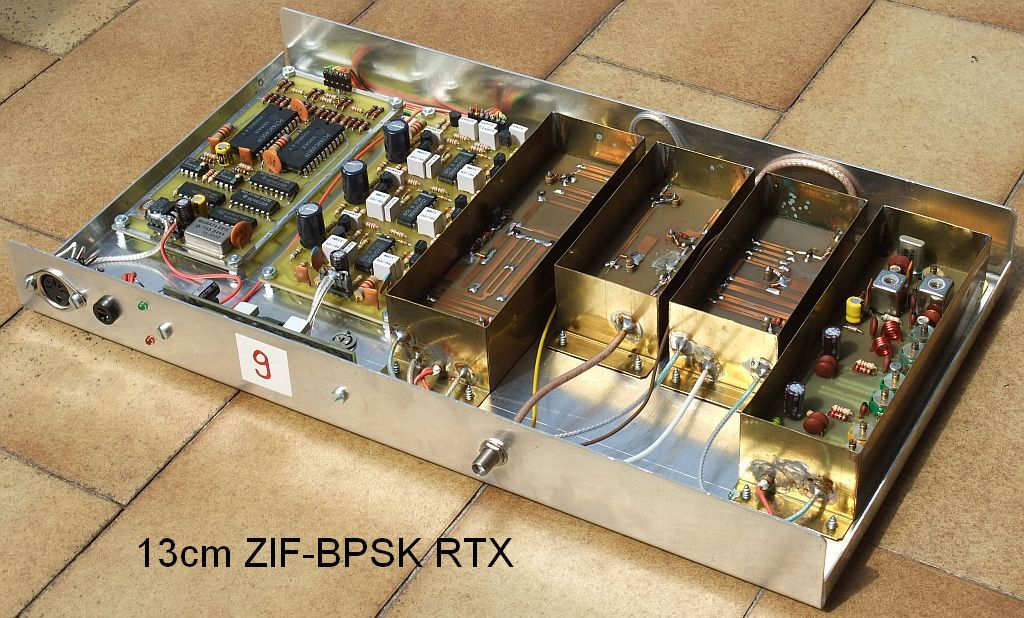
ZIF-BPSK 13cm RTX description

The dual-channel zero IF and the Costas-loop BPSK demodulator were redesigned for better performance and simpler construction.
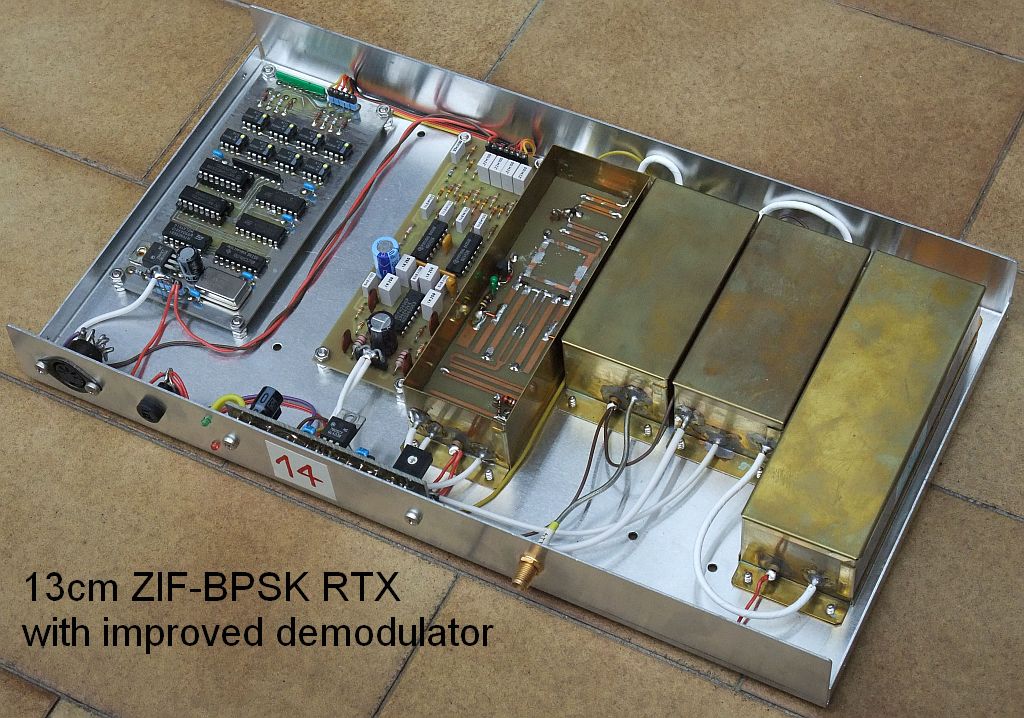
Improved BPSK demodulator description
 Improved BPSK demodulator files
Improved BPSK demodulator files 
6. Experiments at 10Mbps
Experiments did not stop at 1.2288Mbps. Short range but simple UWBFM (40MHz wide, similar to analog FM television) radios were developed for 10Mbps experiments in the 5cm (5.7GHz) frequency band.
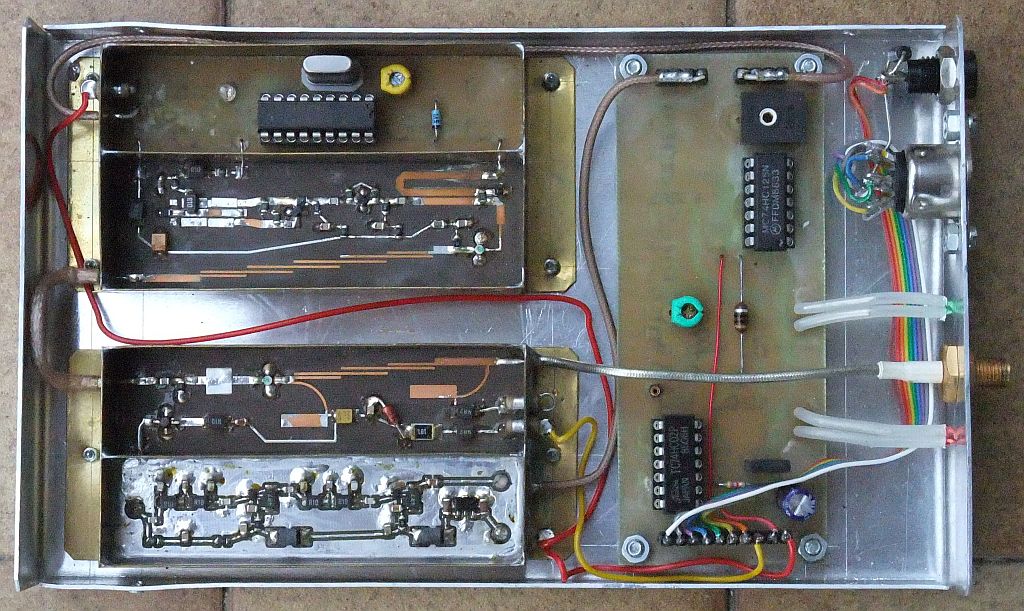
UWBFM RTX description
 UWBFM RTX files
UWBFM RTX files
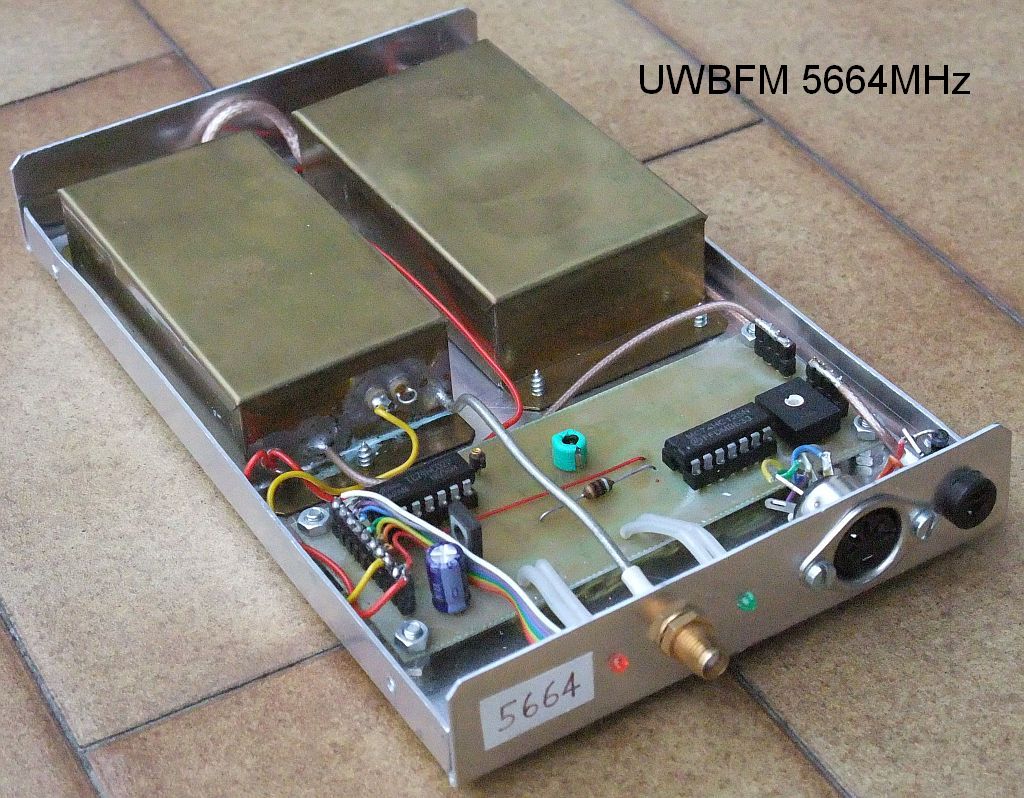
The TNC for 10Mbps was designed around the Infineon SAB82532 HDLC controller thanks to its extensive internal FIFOs.
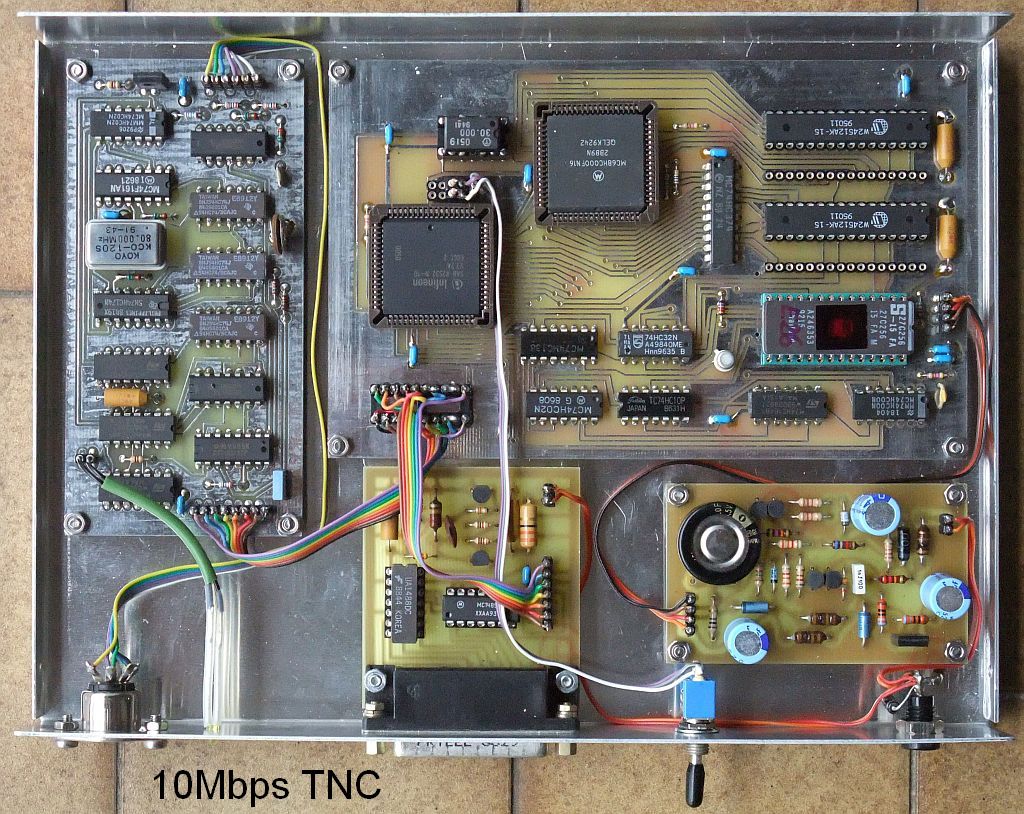
10Mbps TNC description
 10Mbps TNC files
10Mbps TNC files

Unfortunately, AX.25 experiments at 10Mbps did not bring any significant improvement over existing 1.2288Mbps links. TCP/IP throughput did not increase either. The problem seems to be AX.25 itself. Small corrections like increasing the frame size can not solve all of the problems of AX.25.
On the other hand, the SuperVozelj AX.25 nodes proved very reliable. In 20 years of continuous operation on mountain tops, less than one remote-reset telecommand per year was required. SuperVozelj crashes could never be attributed to software flaws, since they were always caused by lightning strikes or other hardware problems (including overclocking...)
We all have to be grateful to AX.25 for the many things we learned from it. Time has come for the third, most difficult step: invent a new, simple and efficient protocol that will replace AX.25 in amateur packet radio. At least if we want to keep alive packet radio in particular and amateur radio in general in the years to come.